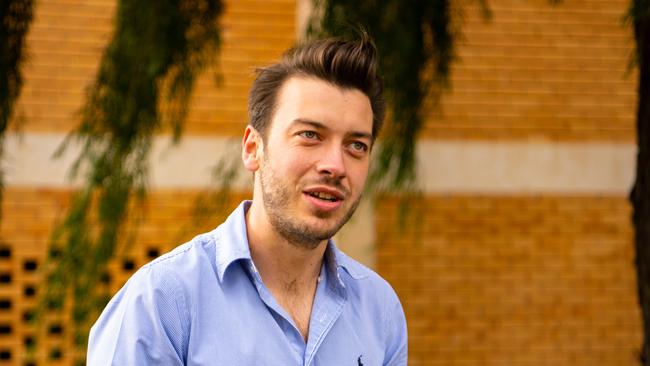Cops reveal their struggles in fight against youth crime as it skyrockets by 140 per cent
The state’s youth crime has skyrocketed by 140 per cent forcing SA Police’s Acting Assistant Commissioner to question the role of the parents.
Frustrated police have pointed the finger at irresponsible parenting for youth crime rates that have skyrocketed 140 per cent in the past six years.
New Freedom of Information documents revealed to The Advertiser, show the number of offenders, aged 10 to 17, has risen from 6938 in 2018-19 to 16,710 in 2023-24.
In response to the data, Acting Assistant Commissioner John De Candia said police were observing high rates of recidivism within youth crime.
“About 10 per cent of offenders really account for 50 per cent of the crime,” he said.
“Then if you extend it out, the top 20 per cent account for 75 per cent.
“And some of the data we’ve got from our intelligence indicates a number of offenders that have 200 plus offences, each of them over a period of a number of years – and they’re just the offences that we know about.”
Mr De Candia said police were doing everything they could but conceded the high rate of youth recidivism indicated something was “obviously failing” in the corrective system.
“Police can only do so much,” he said. “We can only arrest them and put them before the Youth Court … but it’s a bit of a revolving door.

Mr De Candia placed much of the blame at the parents, reminding them that broader community safety was dependant on “what happens in the home”.
“Where are their parents? Where are their guardians? What responsibility have they got?” he said. “They’re the ones who are failing and they’re the ones who need to step up and accept their own responsibility so that we have a safer community – and not always point the finger to other people to solve their problems.
“If you want to be a parent, then you actually need to accept that responsibility and have some accountability for your kids.”
A week ago, the western suburbs were shaken after an 11-year-old boy allegedly inserted a sharp projectile into a modified toy gun before firing it at a Westfield West Lakes shopper.
The Advertiser understands a female victim sustained minor leg injuries in the random attack.
The boy was charged with assault and carrying an offensive weapon in a public place; he was bailed to appear before the Port Adelaide Youth Court in April.
Mr De Candia said the incident was particularly “concerning”.
“Something is obviously wrong when you’ve allegedly got an 11-year-old that thinks they can go to a shopping centre and do that,” he said.


Shadow Police Minister Jack Batty, who lodged the Freedom of Information request, is calling for legislative change to increase penalties for youth recidivists.
“We must launch an urgent review into penalties and breach of bail because these youth offenders are being caught and released back onto the street repeatedly,” he said.
“South Australians deserve to be able to walk through their local shopping centre, run their
small businesses and go to sleep in their own homes without fear of being the latest victim of
youth crime.
“And these louts who get arrested only to be let out on bail to commit more crimes are making an absolute mockery of the justice system.”
A state government spokesperson said South Australia had the lowest youth offender rate of any state and wouldn’t tolerate groups of young people committing violent acts that put the community at risk.
“We have passed the toughest penalties in the nation for criminal ringleaders who seek to recruit children, up to 15 years in jail,” the spokesperson said.
“Strong new bail laws and more electronic monitoring of young people – a 73 per cent increase since 2020-21 – are also ensuring public safety.
“Increased monitoring has enabled breaches to be detected more effectively, with significant reductions in the numbers of bail breaches by some young offenders.
“The government is taking strong action to break the cycle of youth offending, upgrading Kurlana Tapa Youth Training Centre and expanding support and early intervention programs.”
Mr De Candia said youth offenders went one of two ways once they matured into adulthood.
“There’s a small cohort that – it doesn’t matter what you do – will continue to offend and the juvenile offenders then become adult offenders,” he said.
“It’s just that vicious, repeat cycle.
“However, we do find that generally these kids, as they grow up and learn and mature … generally we find that once they become adults at 18 and enter a completely different (justice) system … then quite often their offending ceases.”
More Coverage
Originally published as Cops reveal their struggles in fight against youth crime as it skyrockets by 140 per cent




